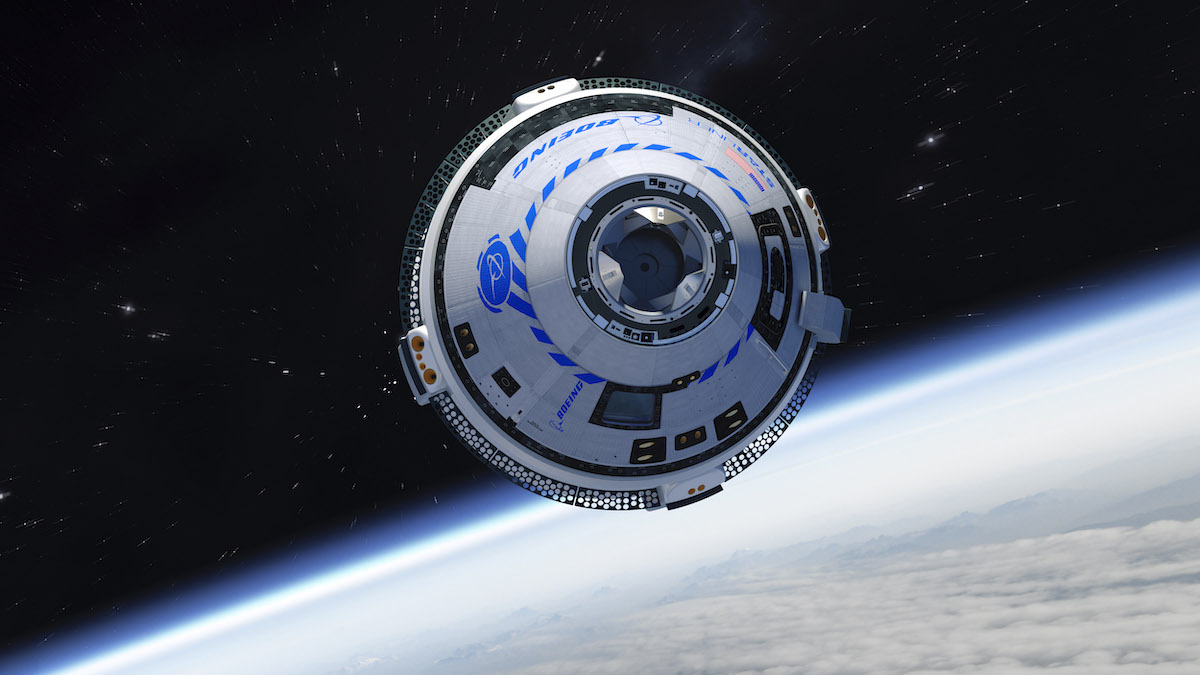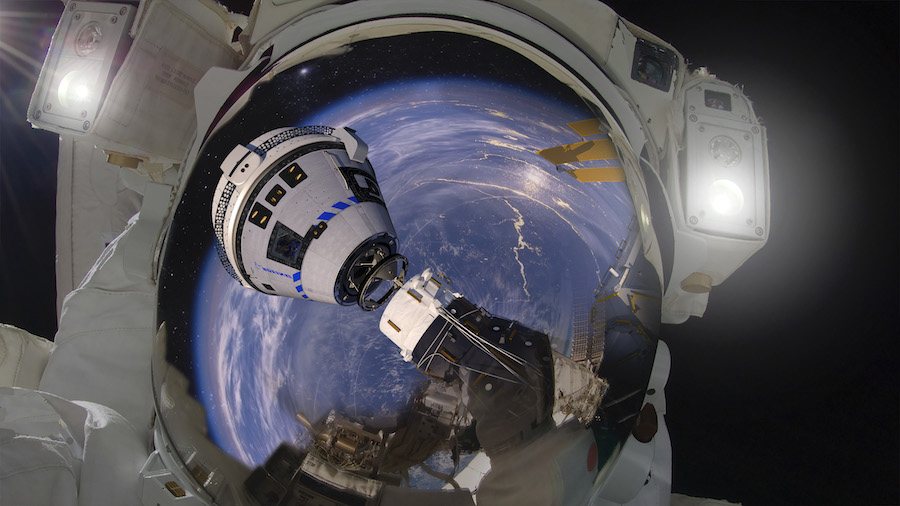
NASA officials cleared Boeing’s Starliner crew capsule for launch next week in a flight readiness review Wednesday, moving a step closer toward a critical unpiloted demonstration flight to attempt docking at the International Space Station and check off other test objectives left unaccomplished on a problem-plagued mission two-and-a-half years ago.
The Starliner spacecraft is set to launch from Cape Canaveral on the Orbital Flight Test-2, or OFT-2, mission May 19 aboard a United Launch Alliance Atlas 5 rocket.
“It was great to have a very productive and thorough OFT-2 flight test readiness review today at the agency level,” said Steve Stich, manager of NASA’s commercial crew program, which oversees the Starliner contract with Boeing. “We got a ‘go’ coming out of that review. We are proceeding toward a launch on May 19. The launch time is 6:54 p.m. Eastern (2254 GMT).”
The test flight is intended to gather data and prove the readiness of Boeing’s Starliner spacecraft to transport astronauts to and from the space station. It’s a redo of the OFT-1 mission in December 2019, which was cut short by software woes that caused the Starliner capsule to burn through propellant shortly after launch.
Developed in a public-private partnership, the Starliner spacecraft will give NASA a second human-rated capsule capable of ferrying astronauts to and from the space station, alongside SpaceX’s Dragon spaceship, which launched with a crew for the first time in May 2020.
The problems on the 2019 flight prevented the Starliner spacecraft from reaching the space station, and Boeing commanded the capsule to re-enter the atmosphere and land in New Mexico two days later.
After rewriting parts of the Starliner software code and running it through more extensive testing, Boeing and NASA moved forward with preparations for the OFT-2 mission — a test flight added to the Starliner schedule at Boeing’s expense.
The spacecraft was rolled to the launch pad last August at Cape Canaveral atop its Atlas 5 rocket. But on the morning of the scheduled launch, tests revealed 13 stuck isolation valves in the Starliner propulsion system.
Boeing and NASA agreed to remove the Starliner from the Atlas 5 rocket and postpone the mission to investigate the valve problem. Boeing says testing showed corrosion inside the valves — caused by a chemical reaction between moisture, nitrogen tetroxide propellant, and the valves’ aluminum housing — caused the components to stick inside the plumbing on the spacecraft’s service module.
For the OFT-2 mission, engineers improved seals on the valves to prevent moisture intrusion, and added nitrogen purges to keep atmospheric humidity out of the propulsion system. Boeing also swapped the balky service module from last summer’s launch attempt with a brand new propulsion section, with a fresh set of valves and thrusters.
The company says it is considering design changes to the oxidizer isolation valves — potentially reducing the amount of aluminum in the valve housing — for future Starliner missions, but officials are “confident” in the mitigations introduced to prevent moisture intrusion before the OFT-2 launch.

Boeing transferred the Starliner spacecraft May 4 to ULA’s Atlas 5 rocket hangar, where teams hoisted the capsule on top of the launch vehicle. The 172-foot-tall (52-meter) rocket will roll to the launch pad May 18, the day before liftoff.
If all goes according to plan, the Starliner spacecraft will dock at the space station’s Harmony module around 7:10 p.m. EDT (2310 GMT) on May 20, assuming the mission blasts off May 19. Boeing and ULA have a backup launch opportunity May 20.
But first, the spacecraft will need to run through a series of tests and demonstrations to prove to NASA it can safely approach the space station.
“OFT-2 is the second orbital test flight,” said Mark Nappi, vice president and manager of Boeing’s Starliner program. “The first one, we had some demonstrations that were completed with landing and launch, and now OFT-2 is going to focus on things that are in between — the Starliner’s ability to rendezvous and dock, receive commands from the ISS, and demonstrate our ability to hold and retreat.”
After liftoff from Cape Canaveral, flight controllers at NASA’s Johnson Space Center in Houston will take over oversight of the Starliner mission for the capsule’s trek to the space station.
The Starliner will perform a series of demonstration burns on the way to the space station to verify the ship’s thrusters, computers, and navigation and control systems are ready to approach the orbiting research complex with its seven-person crew.
The crew on the International Space Station will monitor the Starliner spacecraft’s final approach. If needed, the astronauts on the station can send commands for Starliner to halt its approach or fly away from the complex.
Engineers also want to ensure thermal imaging cameras — part of the Starliner’s Vision-based, Electro-Optical Sensor Tracking Assembly, or VESTA — are operating correctly. The vision-based navigation sensors will help the spaceship automatically dock to the space station.

“This being a test flight, we’ve got to demonstrate all the new technologies that Boeing has put into their spacecraft, and confirm that they all work as expected,” said Emily Nelson, NASA’s acting chief flight director at Johnson. “Most of those demonstrations are tied to first establishing one sensor that can be trusted, and then comparing the next sensor to that first sensor, and so on through the rendezvous period.
“One of the most important and really cool sensors they have on their spacecraft is called VESTA, and it basically looks at the silhouette of the space station, and once we can confirm that it’s seeing the space station correctly, it’s identifying where it ought to go,” Nelson said. “The space station is really large, we’d like for it to arrive at the correct port.
“Once we can identify it’s going to the right place, we’ll do a couple of demonstrations once we get close in, where the spacecraft will stop to demonstrate that if we tell it to stop, it will, in fact, stop” Nelson said. “It will automatically retreat some, to demonstrate that we have that retreat capability, and then it will press in to the final rendezvous and docking.”
“Really, the only way to get the final piece of data you need to fly crew is to go fly the vehicle in the environment,” Stich said. “That includes flying it during ascent, on orbit, and then docking to the ISS, and we’re about to go do that.”
The Starliner spacecraft will glide to an automated docking at the forward port of the Harmony module. The orbital link-up will be the first use of a new docking mechanism called the NASA docking system, a different design than used on SpaceX’s Dragon capsule.
The NASA docking system is designed to be used on multiple types of spacecraft. A similar mechanism will fly on NASA’s Orion spacecraft on missions to the moon.
Once Starliner is docked at the station, astronauts will open hatches and float inside the capsule. The station crew will unpack about 500 pounds (227 kilograms) of cargo, assess the condition of the Starliner’s internal cabin, and perform voice checks through the Starliner communications system.
A test dummy named “Rosie” will fly to and from the station on the OFT-2 mission.
After about five days, the Starliner spacecraft will undock from the station and perform a braking burn to target landing at White Sands Space Harbor in New Mexico. The spacecraft will jettison its disposable service module, while the crew module — designed for up to 10 flights — parachutes to an airbag-cushioned touchdown the desert floor.
Then NASA and Boeing engineers will assess data from the OFT-2 mission before giving approval for the launch of the Crew Flight Test, which will carry two or three astronauts to the space station. Boeing says the Starliner spacecraft for that mission is on track to be ready for launch by the end of this year, but officials have not set a schedule for the flight.
Email the author.
Follow Stephen Clark on Twitter: @StephenClark1.
from Spaceflight Now https://spaceflightnow.com/2022/05/11/nasa-managers-clear-boeings-starliner-capsule-for-second-try-to-reach-space-station/
via World Space Info







0 comments:
Post a Comment